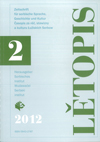Kak serbska je Budyska přisaha?
How Sorbian is the Townsmen’s oath of Bautzen?
Author(s): Eduard WernerSubject(s): Language and Literature Studies
Published by: Domowina-Verlag GmbH / Ludowe nakładnistwo Domowina
Keywords: Bautzen; oldest attestation; townsmens' oath; Budyska přisaha; rěčny pomnik; Der Burger Eyd Wendisch; hornjoserbski; čěski
Summary/Abstract: The Townsmen’s Oath of Bautzen has traditionally been regarded as the oldest attestation of Upper Sorbian. However, it contains many phonological and morphological features which are hardly compatible with Upper Sorbian. Schuster-Šewc’s explanation assumes extensive Czech and Lower Sorbian influence; he claims that the writer was either a Lower Sorb who could not tell the difference between his native Lower Sorbian dialect and Upper Sorbian or a Czech who knew both and therefore mixed Lower Sorbian words into the Upper Sorbian text. Neither suggestion is fully convincing. If we divide the linguistic features of the text into those which must be Czech, Upper Sorbian and Lower Sorbian we do not find any which require us to assume Lower Sorbian influence and only very few (and then exclusively phonetic ones) which point towards Upper Sorbian. Therefore, we interpret the attestation as a Czech oath which has been rewritten by an Upper Sorb who substituted the Czech [ř] and [ť], not found in Upper Sorbian, with the corresponding Upper Sorbian reflexes [š] and [č]. Then, the same text was rewritten by a German who did not know Sorbian (probably the same individual who gave the text its German title) and who had therefore difficulties distinguishing the orthographically similar <cz> and <y>. Thus, using the analogy of the Church Slavonic recensions we could speak of an Upper Sorbian recension of a Czech attestation.
- Issue Year: 2012
- Issue No: 2
- Page Range: 114-121
- Page Count: 8
- Language: Sorbian languages
- Content File-PDF

